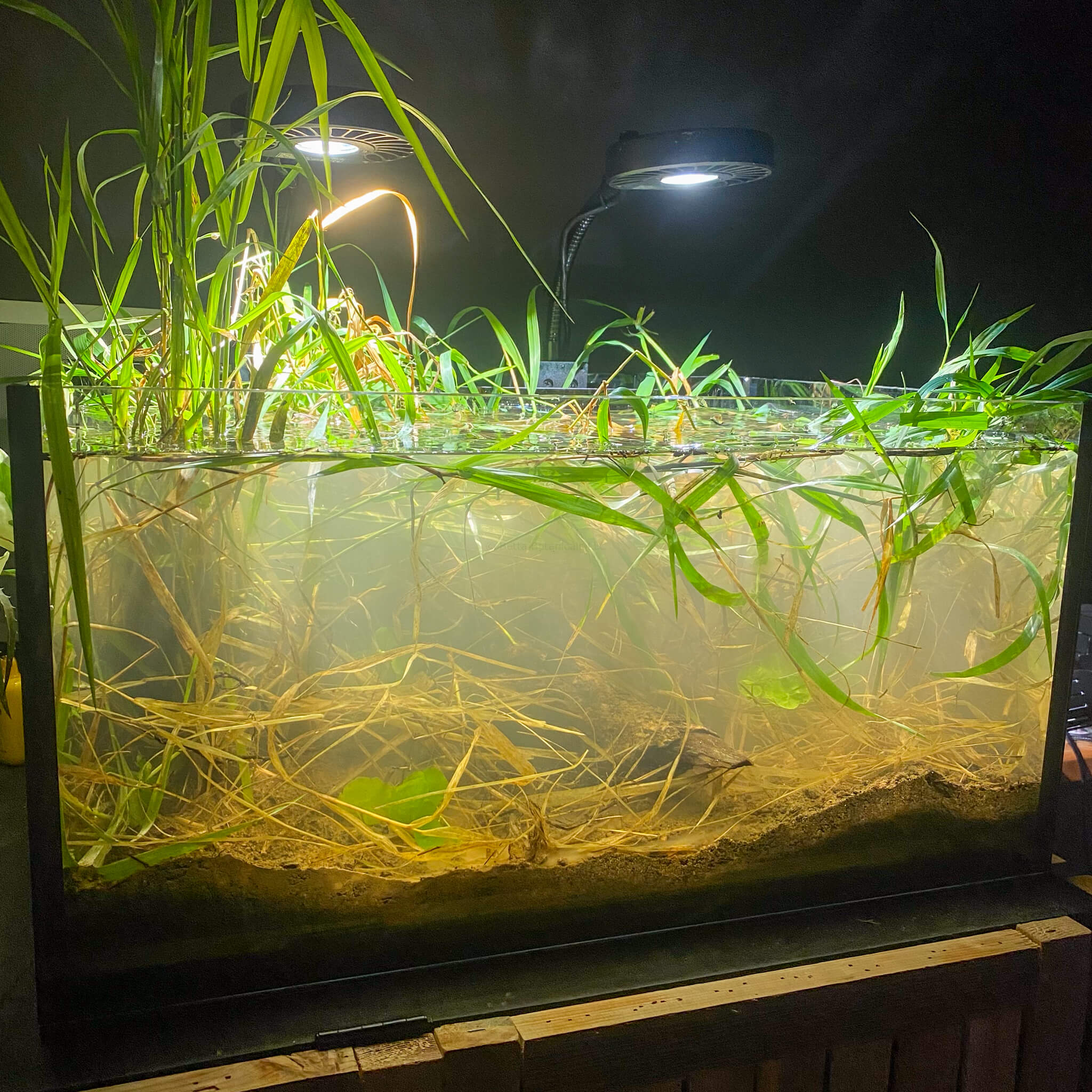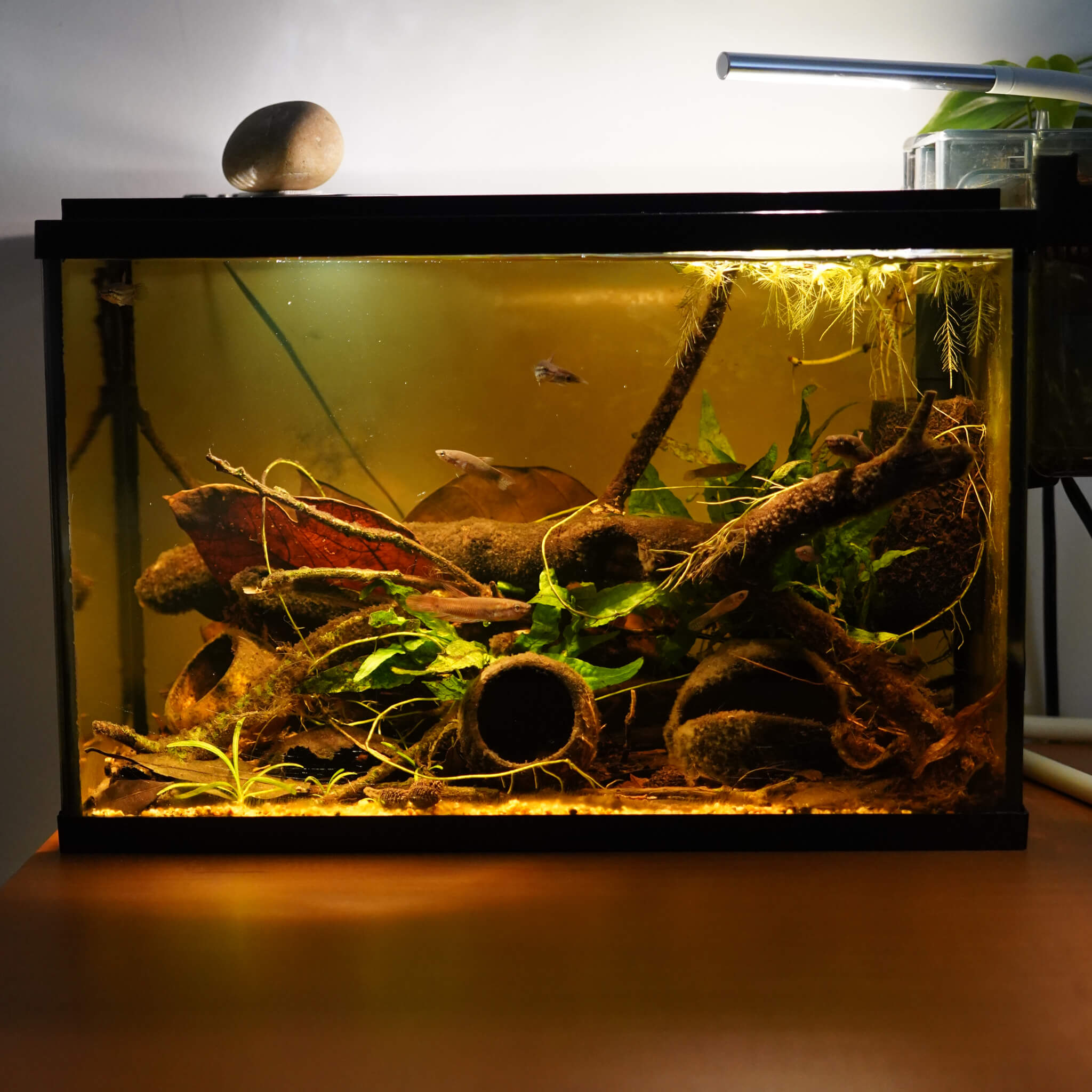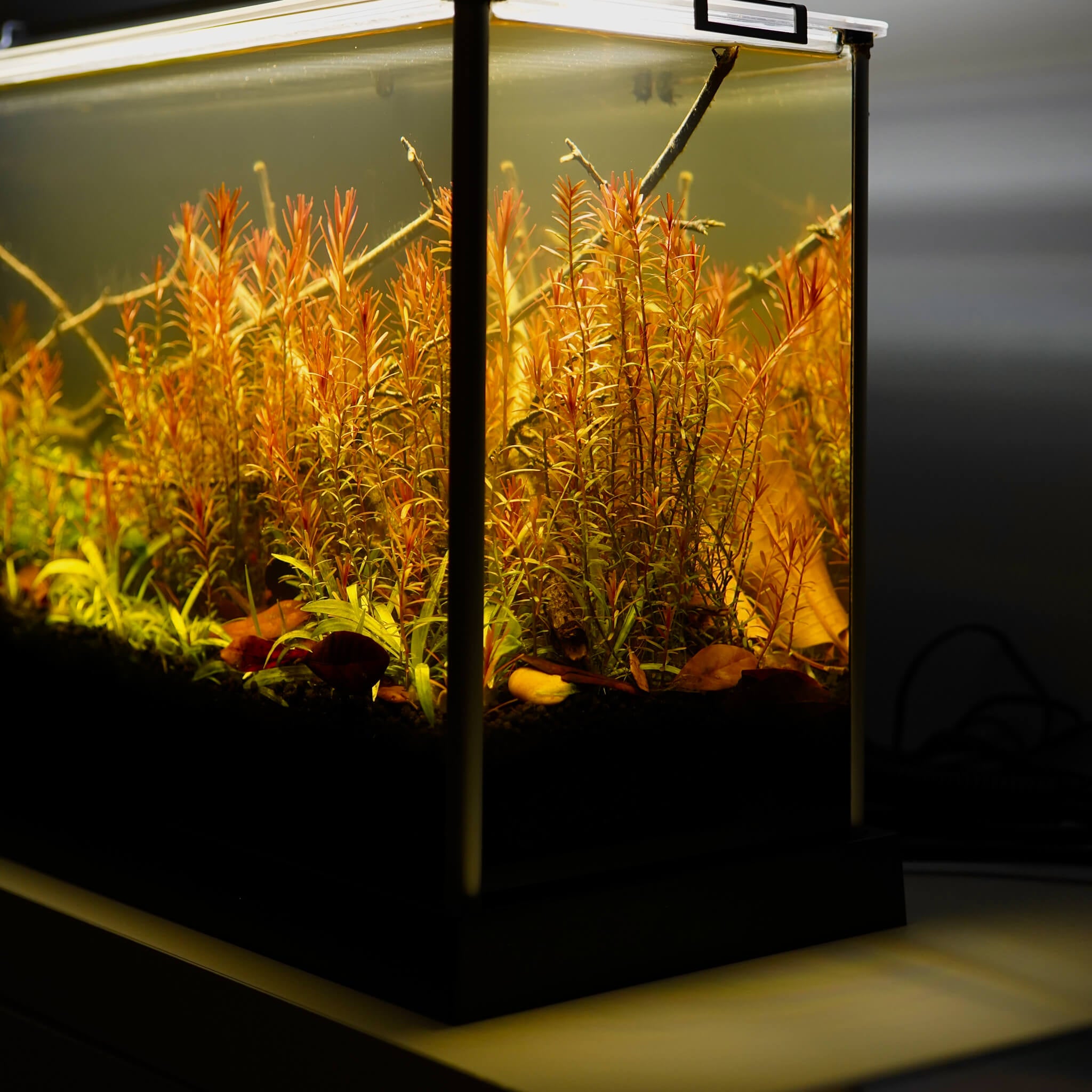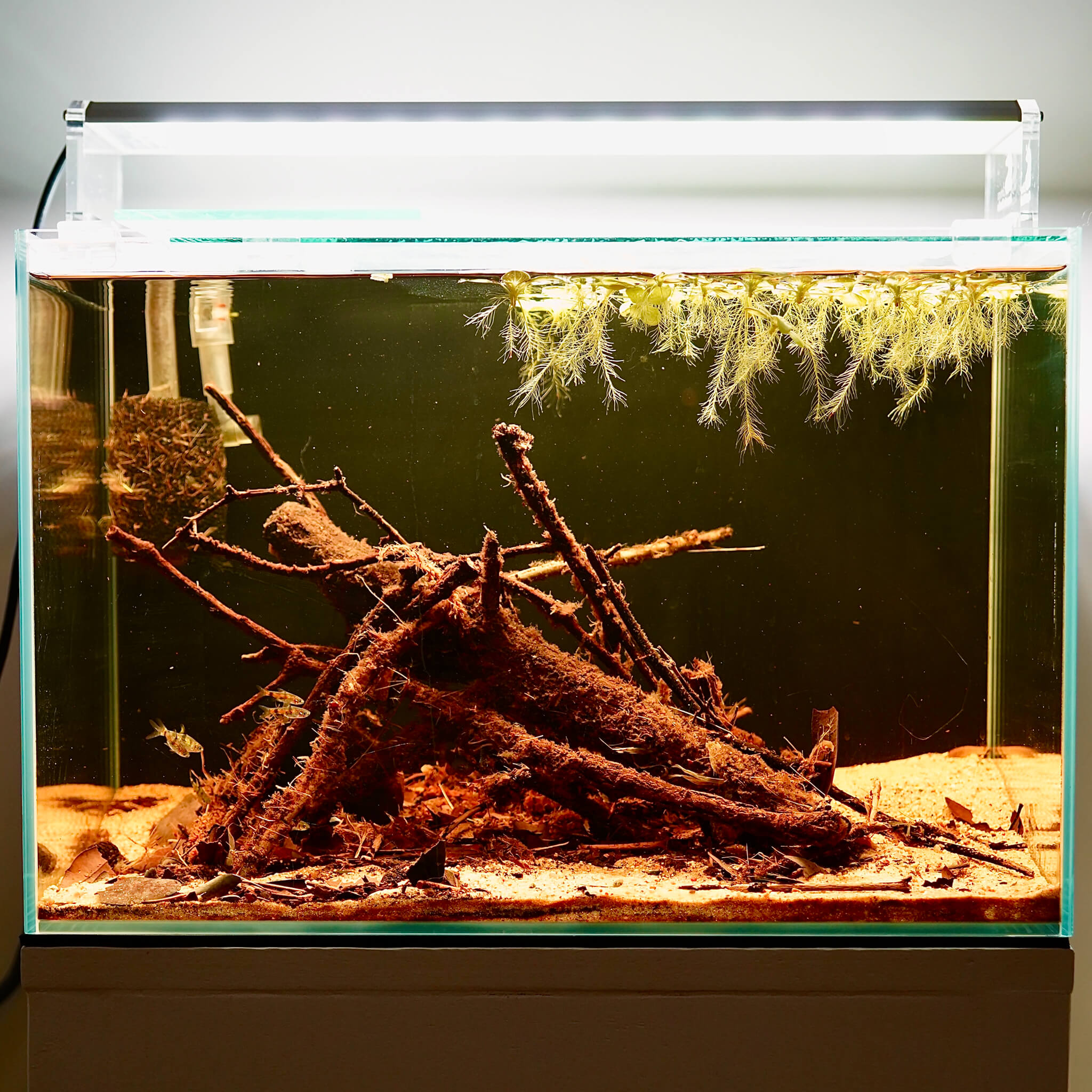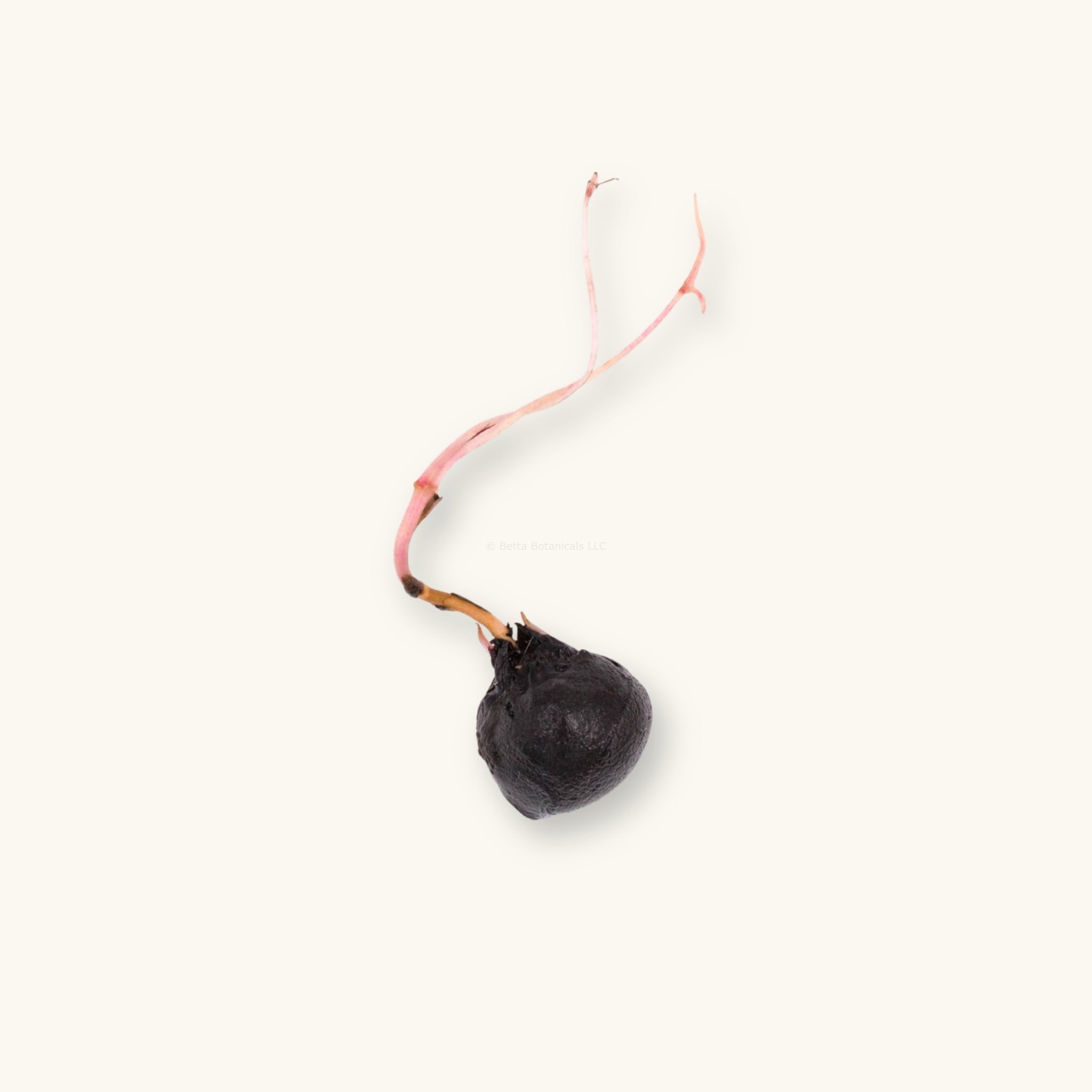
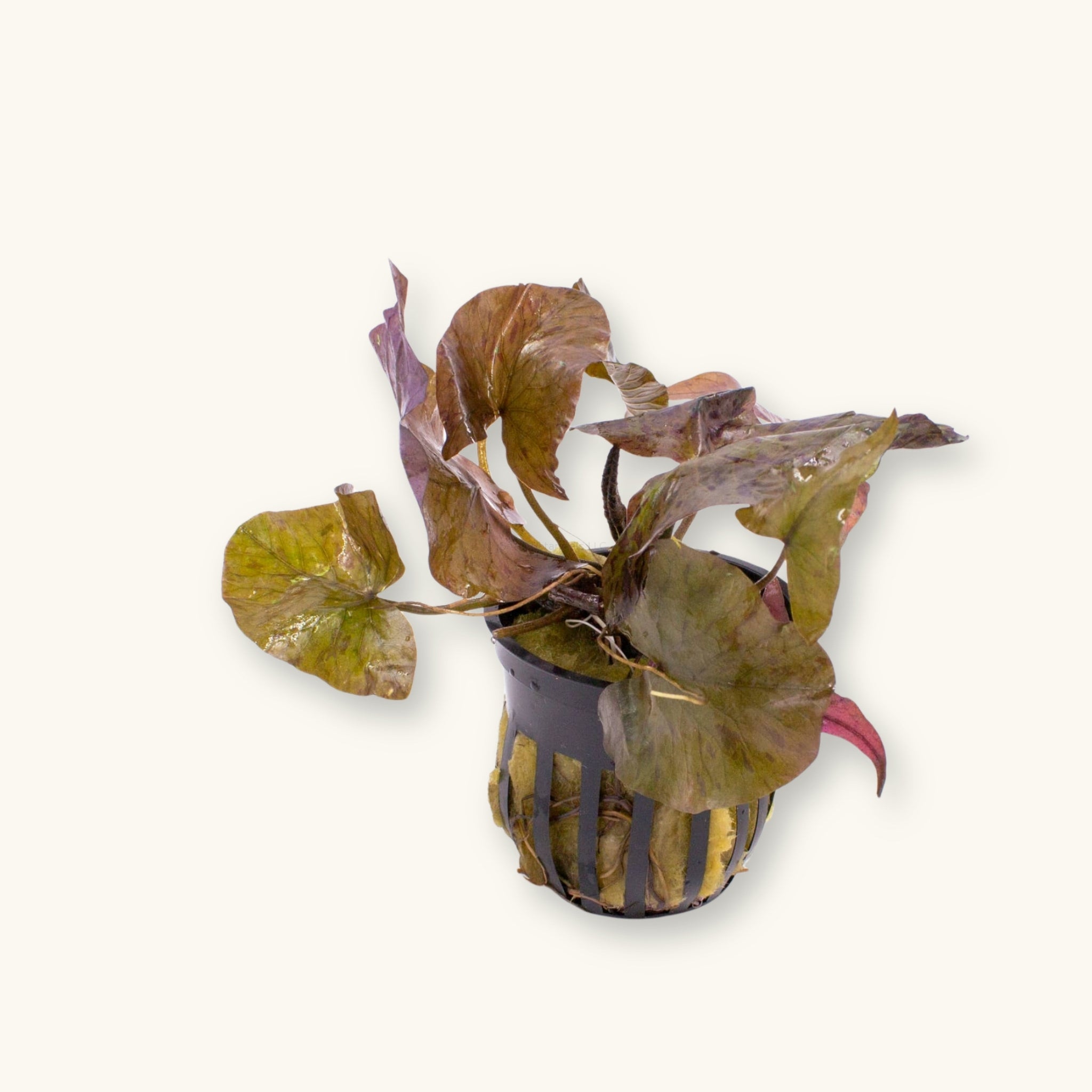
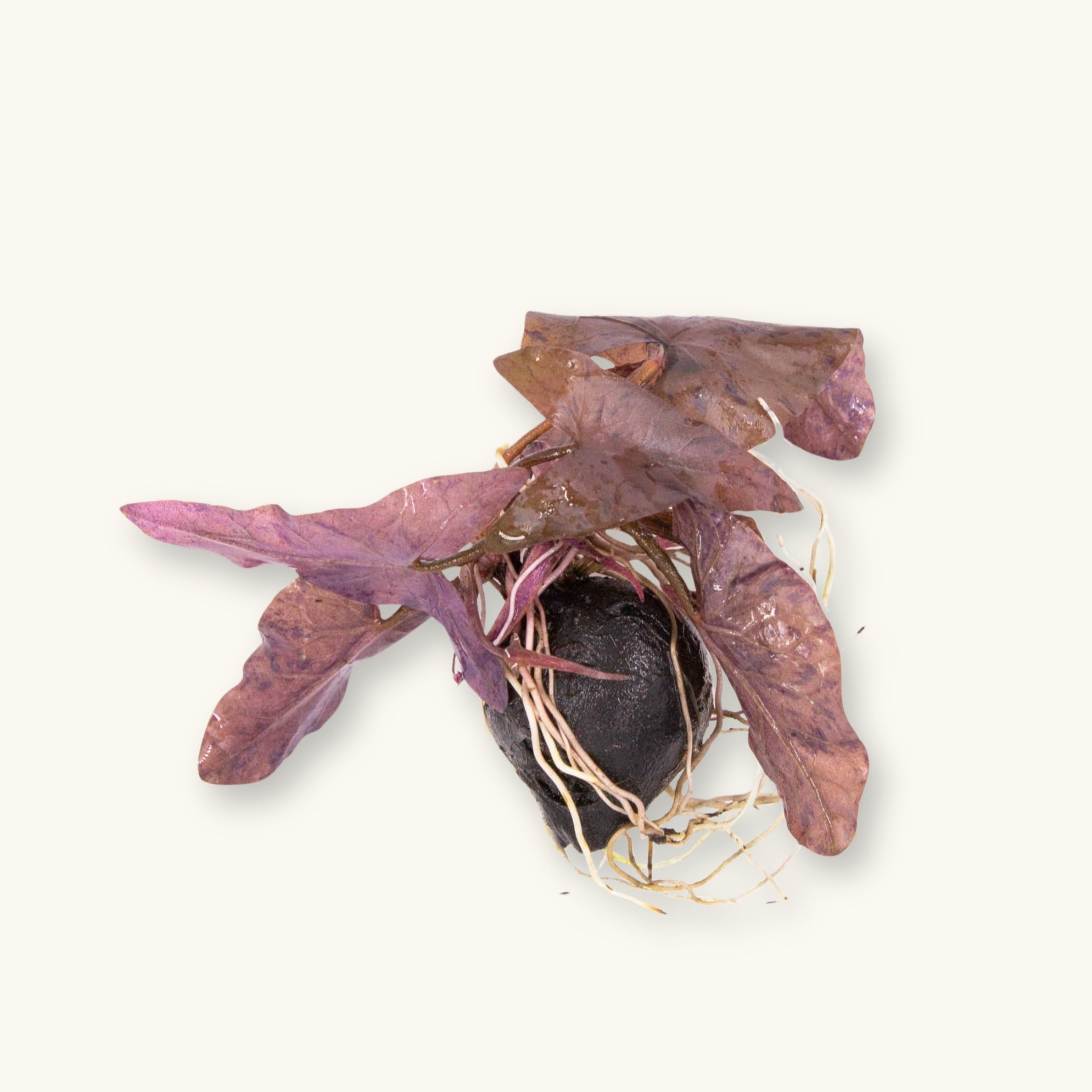
Red Tiger Lotus | Nymphaea zenkeri
Red Tiger Lotus
Scientific Name: Nymphaea zenkeri
Common Names: Red Tiger Lotus, Nymphaea Tiger Lotus
The Red Tiger Lotus is a beloved tropical lily among blackwater, biotope, and botanical method aquarium enthusiasts for its dark red leaves. These plants feature vibrant reddish leaves and can even produce fragrant flowers under optimal conditions. Surprisingly easy to care for, they thrive in well-lit spaces without requiring specific care.
Although fertilizer can promote growth, it may lead to the development of long-stalked floating leaves that can block light from other plants. However, these leaves can also bear beautiful white flowers, enhancing the tank's aesthetics. The Red Tiger Lotus adapts well to various water conditions, tolerating both acidic and alkaline environments. Regular removal of long-stalked leaves ensures that lower plants receive adequate light, maintaining a balanced aquarium ecosystem.
Caring for Red Tiger Lotus in Blackwater Aquariums
Care Level: Easy
Light: Medium
CO2: Not Necessary
Propagation: Cut from side shoots that form
Tint Tolerance: Low to High levels of tannins, the lotus will send floating leaves, which are not impacted by the tint of the water.
Native Habitat: East and West Africa
All Plants may contain snails or snail eggs. We keep them in all of our tanks for the benefits they provide. Our blackwater aquarium plants are provided by H2OPlants in adherence to their Shipping and DOA Policies. Your curated selection will arrive in their packaging separate from your botanical & merch orders.

Red Tiger Lotus | Nymphaea zenkeri
contrast the tint with greenery
While the aesthetic appeal of tinted waters can be quite attractive to us, the recreation of nature—which includes both submerged and emersed plants—is the end goal. Flora helps to improve water conditions, feeding patterns, spawning displays, and territory building.
Aquatic Plant FAQs
DOA Policy
Please ensure that you add a heat pack or cold pack to your orders if temperatures in your area are above 90°F or below 40°F. Click for more info on our DOA Policy.
Are these plants duckweed and snail free?
All Plants may contain snails or snail eggs, small macroinvertebrates, and duckweed. We keep them in all of our tanks for the benefits they provide. We have experienced the presence of small snails, ostracods, daphnia, and beneficial detritus worms.
Are your plants only for tinted water conditions?
Nope! All of our plants will grow perfectly in untinted aquariums that have CO2 and aquasoils, or low-tech planted aquariums. Our selection, though, is optimized for emersed plant growth and low- to medium-tinted water environments.
What is your aquatic plant shipping schedule?
We’re a small company and ship Tuesdays & Thursdays only. Orders placed Wednesday–Sunday → Ship Tuesday. Orders placed Monday–Tuesday → Ship Thursday
Are your plants just for bettas?
Nope. Our aquatic plants are safe for almost all aquariums, terrariums, vivariums, and paludariums. Many of our plants can be grown emersed in filter compartments, vivariums, or incorporated into wabikua.
What are Tannins?
Tannins are natural compounds released by leaves, seed pods, and bark as they decompose in water. They soften water, gently lower pH, and create the characteristic tea-stained tint found in blackwater habitats. But their role goes far beyond color—tannins fuel beneficial bacteria, fungi, and biofilms, which form the foundation of a healthy ecosystem. They also offer mild antifungal benefits and help reduce stress in fish by replicating the natural conditions they’ve evolved in. At their core, tannins are plant-derived antioxidants that connect your aquarium to the same processes at work in wild flooded forests and streams.




